DOC NYC Nov.12-30
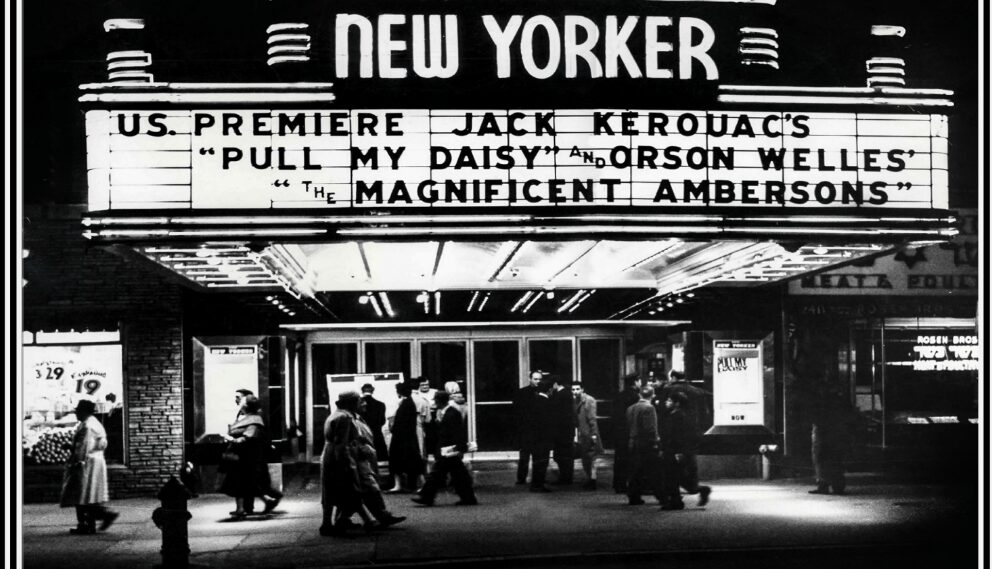
Shining the spotlight on a few faces and places you can’t take your eyes off of
The key changes in this 16th edition of DOC NYC are stated in big capital letters in the festival’s logo, pictured below. The first is that it runs 19 days, My, that’s a long run for any festival to show movies, even on a dozen screens. That’s because this DOC NYC is only partly a theater festival and experience, for roughly its first half.

The second half gets equal marquee billing: IN THEATERS AND ONLINE. This is not the first time DOC NYC has bundled in person and streaming. But it’s the first time a major NYC fest has advertised the two together, positioning theatrical viewing as a prelude, an opening act to the headliner. To this viewer, it’s the inevitable shock headline and a grim reminder that streamed docs to home devices as small as a child’s palm, have now achieved equal footing with docs projected up on big screens in darkened theaters.
What’s truly ironic about these observations is most apparent when you step away from what’s happening at DOC NYC and glance at any bus or subway poster in Manhattan for any movie about to open. “(DATE) IN THEATERS ONLY’ reads nearly every mass transit ad. Which means the filmmaker wants you to see it on a big screen because that’s the only place it’s going to play on (DATE). Was the movie on the bus or subway poster paid for by Netflix, Amazon, Apple, Disney+ or Paramount+? Not very often. With the exception of the Netflix–owned Paris theater in midtown Manhattan, streaming services aren’t interested in selling tickets to NYC movie theaters. And is Netflix truly interested in selling tickets to movie theaters? As the BB King verse goes, “Nobody loves me but my mother (and she could be jiving me, too)” .
When a movie advertises itself as In Theaters Only, it’s a sign of defiance against puny, hand-held movie screens. When a festival advertises itself as equally in person and online, it’s really saying we don’t care how you spend your money as long as you spend it here. Over a week before in person public screenings even began, DOC NYC was advertising $5 tickets to over a dozen feature orphans.
Here are four of this critic’s choices:
The New Yorker Theater: a Talbot Tribute: Sergio Maza: USA: 2025: 26 minutes

When a beloved New Yorker or New York institution passes from the scene, and the tribute docs roll out, we cross our fingers. “They better get this one right,” we mutter to fellow mourners. New York festivals meeting the challenge have included salutes to Joe Papp of the Public Theater, street fashion photographer Bill Cunningham, movie distributor Donald Rugoff, the East 4th vinyl shop Other Music, and the legendary Village bootleg chain, Kim’s Video, Critic’s choices all, and a tip of the hat to each.
Proudly joining them is Sergio Maza’s glorious 26 minute bow to Dan and Toby Talbot, exhibitors extraordinaire. The Talbots introduced double feature world classics (and reintroduced 30s and 40s lost Hollywood titles) to Manhattanites for one dollar admissions at their New Yorker theater. Imagine paying a buck to see two memorable movies, often thematic opposites like Jack Kerouac’s Pull My Daisy and Orson Welles’s The Magnificent Ambersons, on a big screen with perfect sound. This is a loving and lovable 26 minute short that ought to be expanded to 26 hours.
Using Matthew Spaur’s narration, read with boyish enthusiasm direct from Dan and Toby’s two cinematic memoirs (Columbia University Press, 2009 and 2022), we’re given a master summary of how this couple were Bronx sweethearts who grew up together in the dark. They became married cinephiles growing into critics and archivists, then exhibitors, distributors, and preservationists. In their heyday, Dan was viewing 350 movies a year, always guided by the principle that “an audience is as intelligent as you want it to be.” At the Talbots’ five-screen Lincoln Plaza Cinemas in Lincoln Center, patrons got used to seeing Dan and Toby’s daughters as well as their grandads and moms who helped in the elderly and ran the concessions stand. This was the Talbots’ last stop in careers that included founding New Yorker Films and owning/operating The New Yorker Theater at 88th and Broadway, Metro Cinema further uptown, and the East side Cinema Studio 1 and 2.
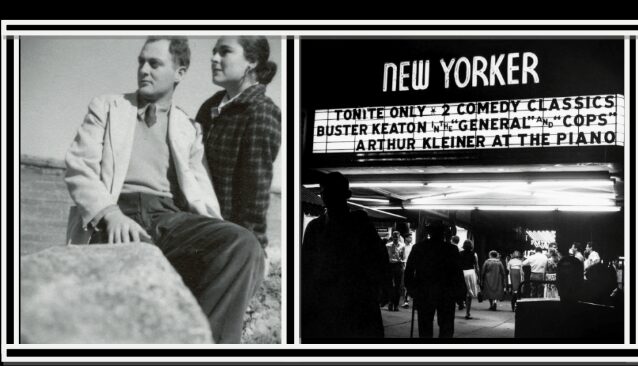
Maza’s 26 minutes adroitly intercut this fascinating history with a blitz of clips from 30’s through 60’s, pre and postwar Hollywood classics, as well as once-forgotten international titles that have become global favorites. Bernardo Bertolucci’s Before the Revolution was New Yorker Films’ first feature release (he calls the Talbot theaters “an official university”). Other onscreen contributors include Wim Wenders, Isabella Rossellini and John Turturro, plus industry stalwarts Bruce Goldstein (Film Forum’s repertory artistic director), authors Phillip Lopate and Annette Insdorf, public relations veteran Lucius Barre, and the current baton carrier of the Talbot legacy, Norma Devi of New Plaza Cinema. They all bring their A-game to Maza.
What this sterling doc demonstrates—more than any other feature or short in this 16th DOC NYC, with its nearly 200 pictures and events—is not just a passion for the movies that were, but the movies to be. Manhattan and its surrounding borough theaters still take down the lights, every matinee and evening, on more indie, retrospective and revival screens than any city on earth. This latest DOC NYC utilizes a dozen screens at the IFC Center, SVA, Village East by Angelika, and The New School. Among the latest Manhattan cinema showplaces, in addition to New Plaza Cinemas, are the all-doc Firehouse Cinema, downtown’s Roxy, Metrograph, Alamo Drafthouse, and Metro Private Cinema. Ira Deutchman is shepherding a $29M capital campaign to renovate the Talbots’ former Metro at 99th and Broadway into the Uptown Film Center, a five-screen showplace for 2028.
The Talbots’ one lingering ghost facade still resides on Broadway, on the walls of a Lincoln Center highrise. It’s a lonely, pesky gravestone, marking where lines once formed early morning, waiting for the Lincoln Plaza box office to admit walkers, bus and subway commuters to its auditoriums, the popcorn popping merrily away. These spaces still await, in a prime retail space, in what will always be a premium end destination. Film at Lincoln Center’s neighboring Walter Reade Theater and its adjacent Munroe screens are a short stroll up the avenue and half a block west. Every New Yorker knows the only constant in this town is change, and there’s always room for one more.
Cutting Through Rocks: Sara Khaki, Mohammadreza Eyni: Iran, Germany, Qatar, Chile, Canada: 2025: 95 minutes
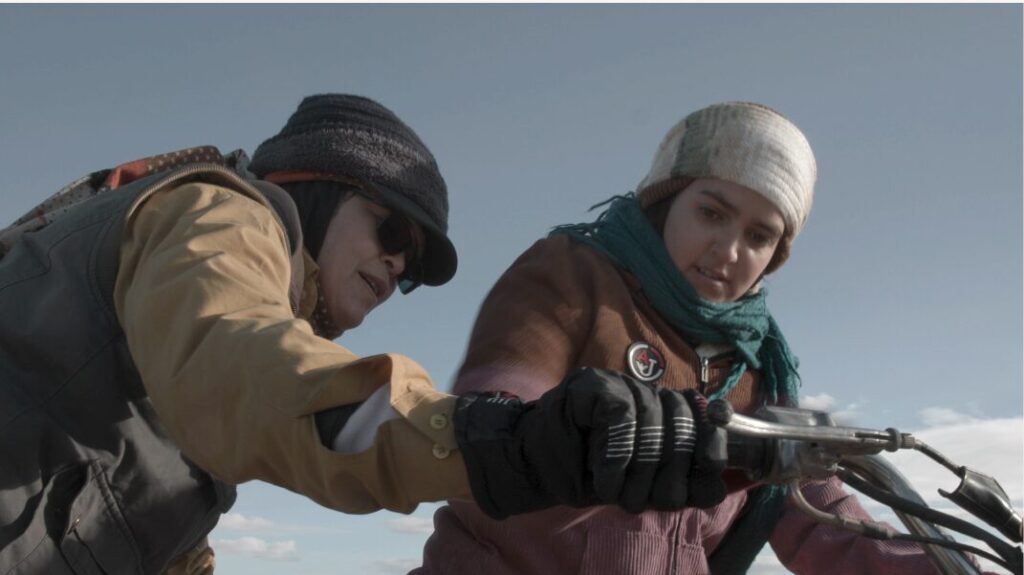
The opening scene of this compelling and frightening feature doc is a metaphor for the entire movie. Sara Sharverdi is doggedly trying to affix a loose iron gate to her family compound in a remote rural village in the Azeri Turk region of Iran. The gate won’t connect. Sara has to drill through metal parts, and does. Then she wrestles the gate into position. The directors are warning us Sara doesn’t have the tools to cut through the unspeakable autocracy of traditional Iranian life surrounding her. Her journey is a calm, measured, carefully considered cry of despair, and a warning signal to viewers of what’s already occurring and may worsen.
A divorced, childless woman with six brothers and three sisters, Sara has midwifed over 400 children. Raised by a father who taught her to ride his motorcycle and infused independence into her soul, Sara is her village’s one female rebel—the maverick of her family. In her black leather jacket and tinted sunglasses, wearing three pairs of men’s trousers to combat Iranian winds on her motorcycle, she’s the lone voice willing to speak truth to power. She runs for village council, promising to implement desired gas lines into primitive homes. She’s one of five elected officials (along with a brother who’s not happy she even ran), and in fact pulls the most votes, a remarkable proof that women still have the freedom to vote in Iran and do so far more than men.
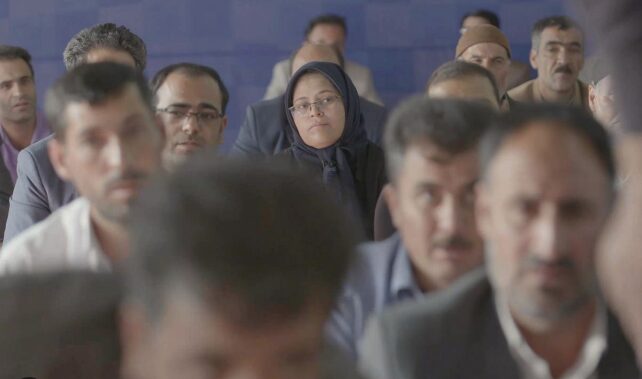
Sara becomes the touchstone for every young girl and a surprising number of silenced women. (In a roomful of women who are traditionally garbed, she asks “How many of you are happy today?”—and not a single hand is raised.) She’s also the engine for education in this end of the world, where pre-teens walk around carrying their babies. Because co-ownership of residences is required for basic government services, the councillor spends much of her new job trying to persuade husbands (including one of her own uncles) to grant co-ownership of their homes to their wives. Her uncle eventually gives in, but many village husbands refuse. Sara also befriends and mentors a bright 12-year-old, Foreshteh, taking her in and briefly shielding her from a forced marriage. We witness a tide of resentment and anger among the male elders, slowly building into hate. It won’t be long before accusations and a formal complaint are filed with the State against Sara, and she will face a trial with punishment so terrifying, even an Iranian woman could not possibly contemplate it.
Khaki and Eyni are an Iranian American husband/wife team who spent eight years in Sara’s village making this debut feature. Eyni is the cinematographer, and his imagery, like their unobtrusive editing and an exceptionally subtle music score, all give this doc the feel of a gripping thriller. Cutting Through Rocks will open November 21 at Film Forum in Manhattan, a run supported by the Fund For Social Justice Documentaries and The Endowed Fund For Emerging Filmmakers. The picture has already won the Grand Jury prize at Sundance. How Sara survives her own journey trying to cut through immovable rocks is a lesson every viewer may want to contemplate.
The Librarians: Kim A Snyder: USA: 2025: 92 minutes
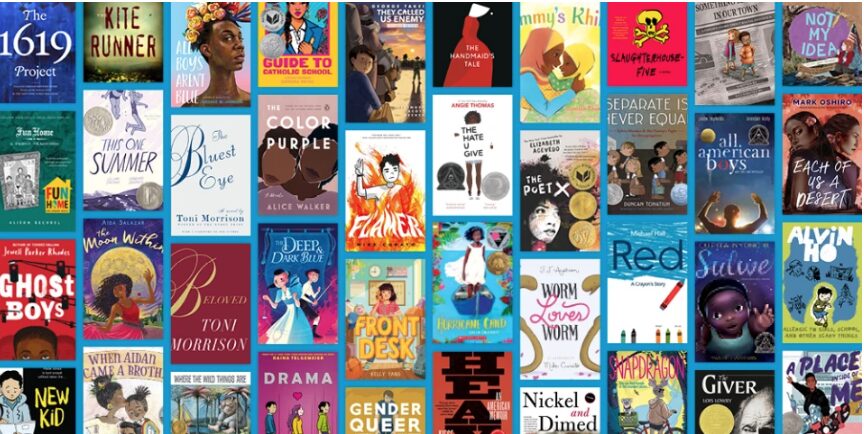
Look at the photo. There are 1,001 reasons to move to New York City (assuming you don’t have to sell all your banned books to afford the first month rent), and this photo should be one of your best. It was curated last fall as part of the exhibit Banned: Censorship and the Freedom to Read by The New York Public Library, the largest public library system in the United States. NYPL, in its own words, is “committed to making and promoting the more than 53 million items in its collection freely available to anyone with a library card.” According to NYPL figures, over four thousand books in 2023 were challenged in libraries nationwide—92% more than in 2022. NYPL has a history of issuing early warning signals against censorship. In 1984 it mounted a similar exhibit, Censorship: 500 Years of Conflict. Way back in 1942, it publicized Books The Nazis Banned. These vital facts may help explain why New Yorkers have always supported more local libraries, local bookstores, local book groups and even local book reviewers.
Nothing in the above paragraph is included in Kim A. Snyder’s riveting doc: a deep dive into the lives of southern librarians who’ve lost their jobs to the Christian theocracy of local school boards. It started in 2021 when Texas representative Matt Krause first launched a statewide movement to ban library loan-outs on 850 fiction and non-fiction books, some of which are pictured in the NYPL photo. These are the volumes now banned by school boards in parts of Texas, Florida, and Louisiana, the states most researched by Snyder. The Librarians premiered at the Sundance Film Festival, showed several weeks ago at Manhattan’s Film Forum, and is now receiving an encore showing in DOC NYC.
Snyder reports on the lives of southern public servants who’ve become victims of hard right school boards. The misery index starts high and builds, because the focus is on dedicated librarians—here all women, some with decades of experience—and their anguish at being fired over—what? A fraction of their institution’s printed matter having to do with gender identity, LGBT-related issues, and racial equality. When fear and hatred of one subject begin, it’s easy to expand a ban to include almost any work of fiction or non-fiction expressing dissent from a theocracy’s idea of How To Make American Great Again. This is how autocracies form at grass roots community levels, supported by elected state governors. And the impetus today radiates from the White House itself. Carla Hayden, the Librarian of Congress and former director of the Baltimore Public Library, was fired six months ago by the current administration for “quite concerning things that she had done at the Library of Congress in the pursuit of DEI and putting inappropriate books in the library for children.” Dr. Hayden was the first African American and the first woman to hold this distinguished position.
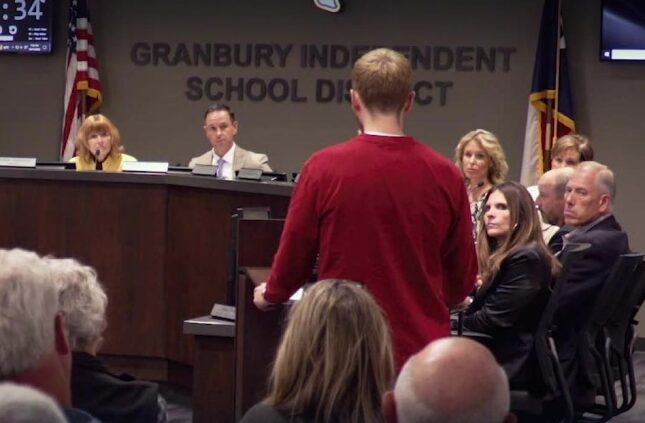
Snyder reminds us that in 1954, Senator Joe McCarthy dominated prime time televised hearings, tearing down democracy. The filmmaker shows that U.S. president Dwight Eisenhower would have no part of that. A World War II general, Eisenhower fully supported the right of anyone to read anything at any public library. No wonder so many elders wore I like Ike buttons on small town and big city streets. Even movie star Bettie Davis lent her talents as a feisty librarian in the 1956 drama on Communism, Storm Center, remarking “I couldn’t remove a book because it has ideas we don’t like.” Snyder sprinkles tidbits of hope like these through a narrative that grows dark and darker.
The Librarians is not an easy doc to watch. Librarian after librarian after librarian describes the despair of not just losing her job but her place in what’s supposed to be a democracy, sometimes to other women they’ve known for years. These accusers now describe their local librarians who used to be their friends as predators, groomers, pedophiles and pornographers. It gets more dire by the minute, as school boards, emboldened by their success at removing Covid masks and vaccinations from their communities, are now not just hauling books off library shelves, but are exploring the process of criminalizing the actions of the employees who ordered them from mainstream publishers.
The movement is well organized and well financed. Moms For Liberty is spreading its tentacles, and Snyder briefly shows their leaders trying to establish a beachhead two years ago on the Upper East Side of Manhattan at a community assembly. But the number of peaceful protestors carrying “Moms For Fascism” signs may have outnumbered the citizens attending, and that captured the attention of a free press.
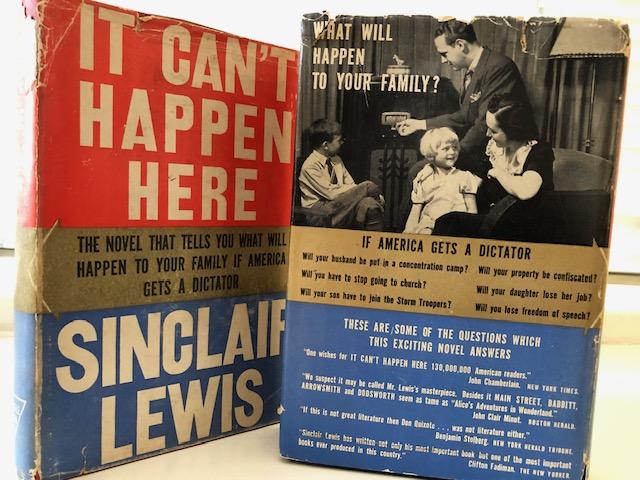
Snyder doesn’t show anything on how bookstores and book publishers today are pushing back against book bans. On Manhattan’s Upper West Side alone, one used and rare book store devoted its entire front window last month to a display of books on fascism. And right on Broadway, a lone rare book collector and sidewalk vendor offers up first 1946 paperback printings of Virginia Woofe’s Orlando (the first 20th century transgender novel) and 1939 hard cover first Triangle Publishing copies of Sinclair Lewis’ It Can’t Happen Here. Look at the cover and back cover. Lewis’ pre-war novel speculated on what would happen if a racist Southern governor was elected President of the United States. The back cover quotes the two burning issues Lewis asked a century ago that librarians are facing today: “Will your daughter lose her job?” “Will you lose freedom of speech?” Lewis thought it can’t happen here. But it is.
Sunset and the Mockingbird: Jyllian Gunther: USA: 2025: 29 minutes
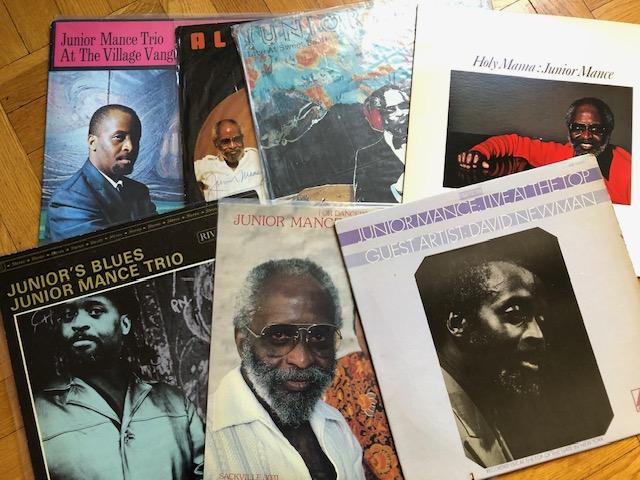
If you’re a blues piano fan, you probably know tunes like “Holy Mama,” “That Mellow Feeling,” “Cracklin’,” “Glidin’ and Slidin’” and “Harlem Lullaby.” Chances are you heard them played by their composer, maybe at Knickerbocker Bar and Grill on University Place, one of Manhattan’s jazz clubs he settled into. Local fans knew him as a solo act or leader of a duo or trio, but over a 92 year lifetime he’d been a sideman with countless horn legends. He wrote the definitive guide, How to Play Blues Piano, and taught it at The New School For Jazz, where he gave master classes. Near his professional retirement he fronted the rhythm section of The Golden Men Of Jazz, under the baton of Lionel Hampton. At the Jazz Record Center on West 26th, he gets his own card and bin, and his dozens of vinyl LPs go out faster than they come in. This is Junior Mance’s world, we just tap our toes to it.
Jyllian Gunther’s 29 minute tribute is a lovely and unexpected surprise, for it charts the sunset of Junior’s life through nearly a decade, his last, with his wife and manager, Gloria Claybourne. Much of it takes place in their Village home, where we see Gloria caring for Junior after a stroke and the onset of dementia in 2012, through his passing in 2021. Sunset and the Mockingbird joins a tiny handful of cinematic milestones on dementia and incurable Alzheimer’s that robs memories but may not steal them away entirely. In dramatic narratives, the gold standards for excellence have been Julie Christie in Away From Her (2007) and Kathleen Chalfant in Familiar Touch (2024). Gunther has made Junior and Gloria their real-life equivalent. What’s so memorable to view (and listen to!) is that dementia may have weakened Mance’s memory of much of his life, but didn’t take away his ability to shuffle over to their living room piano and play the blues.
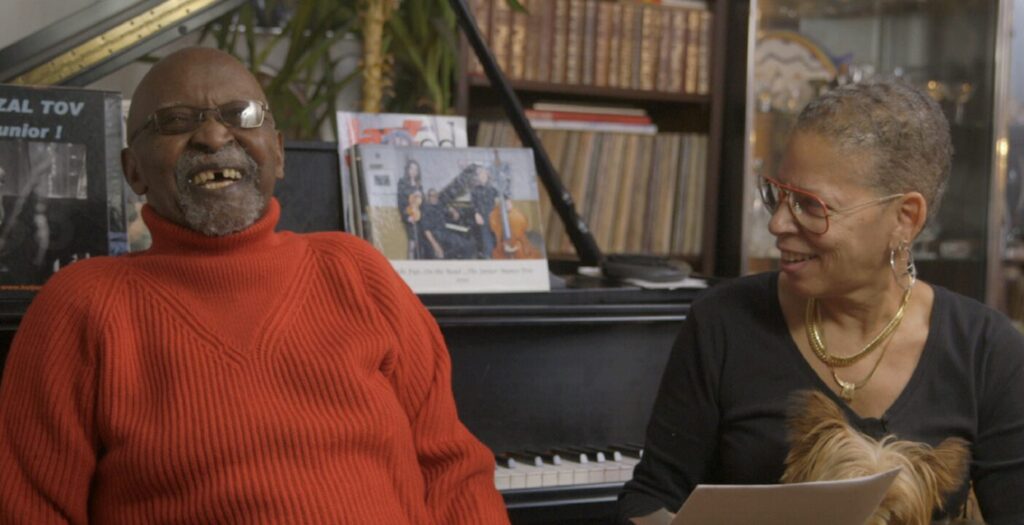
Sunset isn’t a documentary where you ever feel you shouldn’t be eavesdropping. What senior doesn’t know someone whose mental capacities are slipping? The point is to understand the science, the process of living life with it. Junior can be a touch sharp with Gloria, and she gives as good as she gets. She goes out to walk the dog past walls of CDs and LPs her husband no longer remembers. But the melodies of “Smokey Blues,” “Down the Line” and “The Good Old Days” stay somewhere in his mind and fingers. The pianist may no longer recall writing them, but any mistakes he may make playing them have always been part of the jazzman’s art.
Producer/director Gunther, an Emmy winning documentarian currently working in post-production on a doc for HBO, has created the first jazz film on dementia. It’s too valuable a portrait to risk staying just a director’s calling card, like nearly all fest shorts. A shout-out to Jyllian to expand Gloria and Junior into a feature length, big screen theater feature. After all, there may not be that many ancient blues buffs still living in New York City, but half of this town’s citizens buying movie tickets to important docs look past their sell-by date. And listen to this—the best music score in NYC for a feature doc has already been recorded.
This concludes critic’s choices. Watch for Brokaw’s picks in the New York Jewish Film Festival, January 14-28, 2026
Regions: New York City
